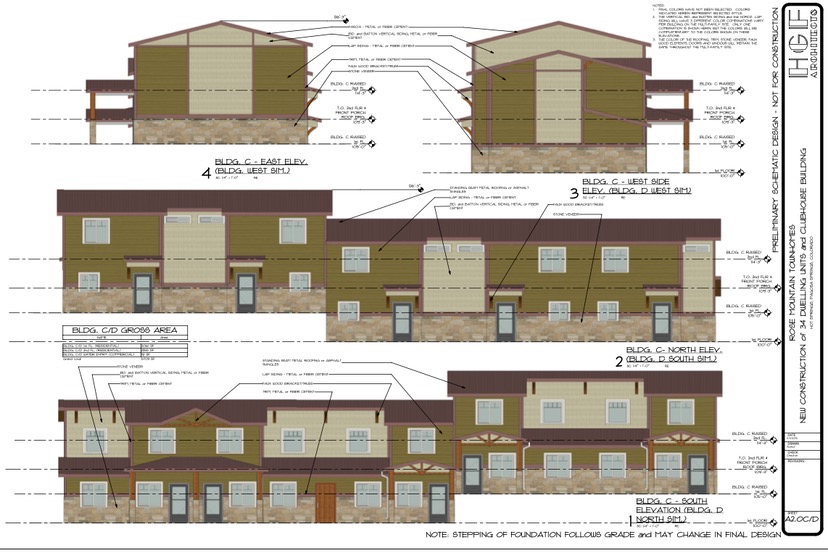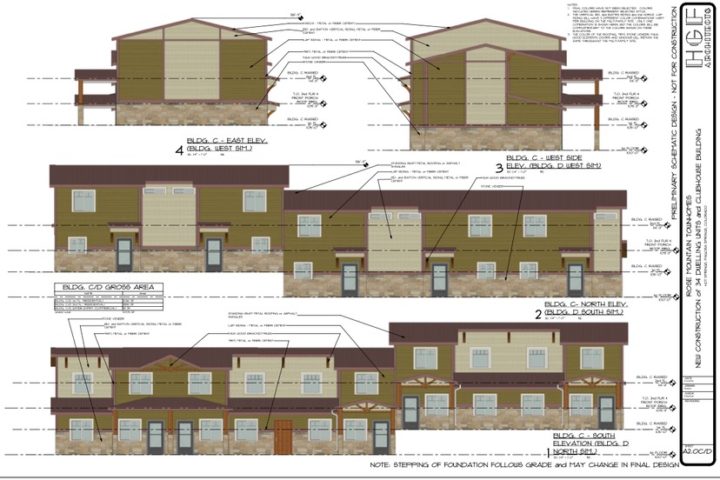As I mentioned on Friday, in Part Seven, last week had been somewhat exhausting, but in a positive sense. It feels like some of our community leaders have not only realized that the financially-obese economy that burst the buttons on Pagosa Springs’ pants during the pandemic… amazing sales tax increases, businesses that experienced their best year ever, stimulus checks flooding in from Washington DC, record real estate sales… that same economy had a dark side, for a whole host of working individuals and families, and for retirees as well.
Not only are some of our leaders, at long last, seeing the threatening storm clouds…
…they seem to be finally hearing the deadly hail hitting the roofs. And some are talking as if they want to address the problems. Or at least, the housing problems.
My interview with construction experts Alan Friedhof and Dan McCraw, last month, focused on the physical and financial challenges of building low-income housing in Archuleta County. (We didn’t delve into the political challenges.)
Mr. Freidhof is Vice President of Estimating and Project Management with Latcon Corp, the Pueblo, Colorado-based company that’s constructing the 34-unit Rose Mountain housing complex at the south end of Hot Springs Boulevard.
Mr. McCraw is the Project Superintendent.
Here’s Mr. Freidhof:
“The buildings are extremely weather tight, and economical.”
I suggested that he meant, “economical in terms of utilities costs”… not “economical to build.”
He responded:
“Definitely not economical to build. Not at all. And materials, right now, are going absolutely crazy. When we first started this project [last year] a sheet of 3/4 inch plywood, wholesale, was running around $23 a sheet. Now, it’s almost $100. A wood stud — if you went to Lowe’s, you would spend $2.48 for one stud. Now, you spend almost $20 for an eight-foot stud.
“We were fortunate, with this project, that we were able to get all our prices locked in early. To give you an idea; I bought the interior trim package for this project — when we got the award, I figured out all the costs and got everything inside budget, and I ordered everything, because I knew COVID was going to make a major impact on this project.
“After I ordered my material, normally I’d be looking at four to six weeks to get it. Well, it took 14 weeks.
“When I got it, one of my competitors called me up and said, ‘Would you like to sell that trim material?’ You know, he and I are friends, and I said, ‘Absolutely not. Why do you ask?’ And he said, ‘Because I’m looking at 36 weeks to get my package, and I need the materials now.'”
I jokingly suggested that, of course, Mr. Freidhof went ahead and sold the trim materials to his friend.
“No,” he laughed. “In fact, it’s stored safety… I’m whispering because I don’t want anyone to know where. But if I had to buy that package now, it would probably cost me triple what I paid for it.”
Latcon Corp will also be constructing a new Archuleta County Department of Human Services (DHS) building on the same site, and had to make modifications to the design, due to materials shortages.
“The original design was bar joist and metal deck… the bar joists are capable of spanning long distances… Well, when we found out that they are 26 weeks out, after the shop drawings are approved… That would put us at the first of next year. It would have set us back 6-8 months of constructing that building. So we sat down with our structural engineer and came up with some ideas; and we were told, ‘No… no… no… and hell no; you can’t do that.’
“We finally came up with a method to make this work, with a system that’s readily available — and by ‘readily available’, I mean 8-12 weeks versus 40 weeks — and that made this project a go.”
Mr. Freidhof had nothing but praise for the various government agencies that Latcon has worked with here in Pagosa. (That’s not always the story I hear from developers.) He particularly called out Pagosa Area Water and Sanitation District (PAWSD) for being easy to work with.
Numerous factors played a role in the (unexpectedly high?) overall cost of the Rose Mountain housing complex… the ordinarily higher costs of materials in mountain communities; some of the design requirements imposed by the Town’s Land Use and Development Code; the shortage of local skilled labor… many things influenced the project budget. By my own calculations, it appears that the 34 “low-income” rental units in this federally-funded $12 million project, will end up costing about $350,000 each.
Mr. Freidhof:
“Those things definitely impacted the budget. Like I say, we enjoy a challenge. And this project has been a challenge.”
Mr. McCraw discussed a few of the “unforeseen surprises” they’ve been able to overcome.
“When we come up against a hurdle, we just have to get over it. The biggest hurdle, so far, has been getting the labor force. Everybody in Pagosa is basically working already. It’s just hard to find people to work.”
Mr. Freidhof noted that Latcon ran ads in the local newspaper for “at least a month, looking for carpenters, laborers; and it turned out, our two carpenters come out of Broomfield, New Mexico. They drive 120 miles just to get to work every day.”
This, to me, is the hail hitting the roof, that we should all be able to hear by now. People driving to Pagosa from 120 miles away, to work here, because we’ve lost such a large part of our local labor force over the past several years.
Especially, perhaps, over the most recent year.
A few days later, the Town Council held a part-Zoom, part-in-person work session to discuss… the sound of hail?


